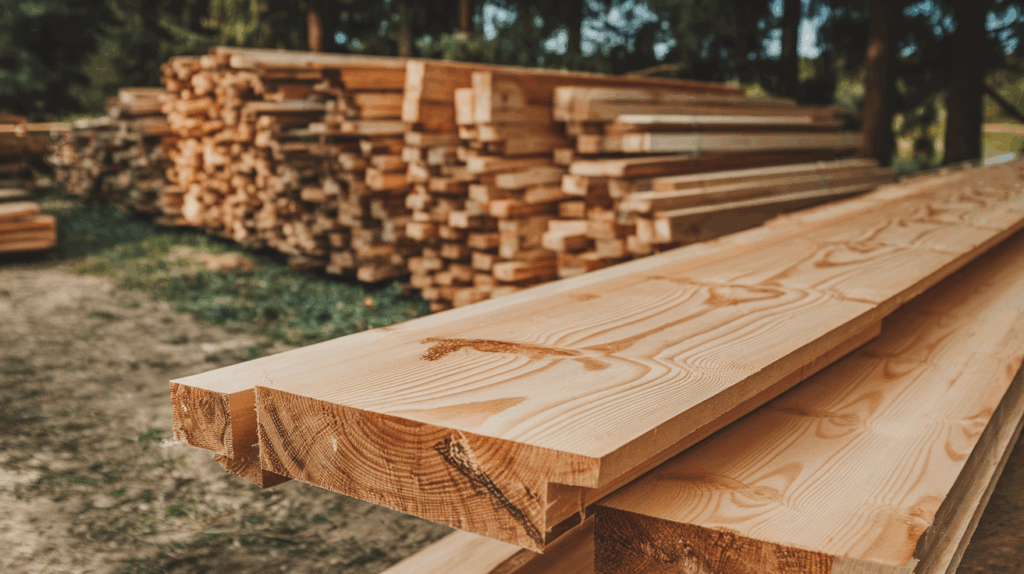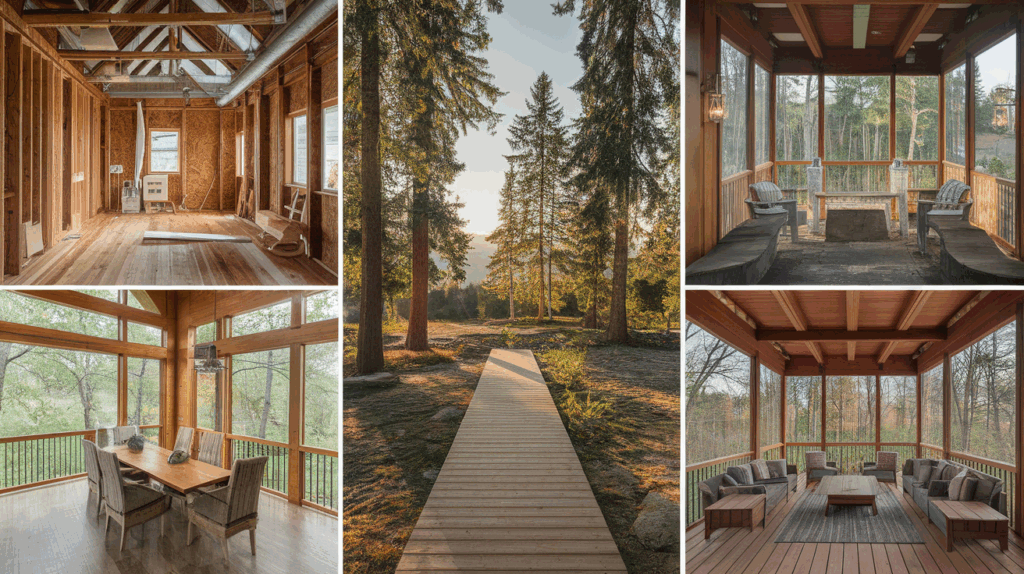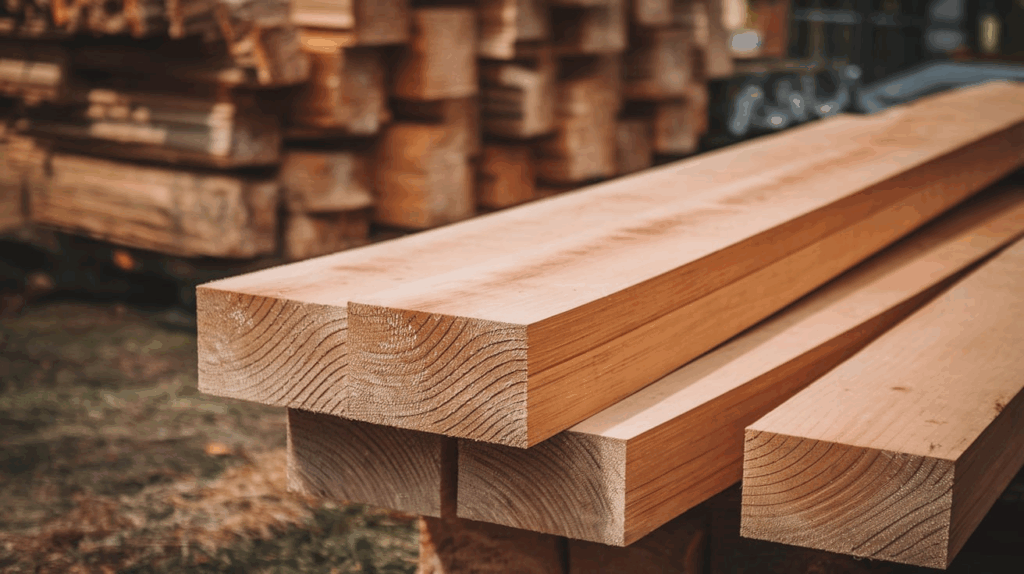When I first heard about Douglas Fir, I wasn’t sure what kind of wood it was. Some people said it was a hardwood, and others said it was a softwood.
That got me curious. I wanted to know the real answer and what it meant for my building plans.
I started digging into the facts and found out there’s more to wood types than just the names.
Douglas Fir has some traits of hardwoods but is labeled a softwood. Sounds confusing, right? Don’t worry. I’ll explain it in a way that makes sense.
In this post, I’ll break down what kind of wood Douglas Fir really is, how it’s used, and what makes it strong or weak.
If you’re thinking about using Douglas Fir for a project, this guide will help you decide if it’s the right fit. Let’s clear up the confusion together.
What Is Douglas Fir?

Douglas Fir is a well-known type of wood often used in building, framing, flooring, and furniture.
It comes from a tree called Pseudotsuga menziesii, which grows in North America, especially in the western United States and Canada.
Even though the name includes “fir,” Douglas Fir is not a true fir tree.
The wood is known for its light brown color with a touch of red or yellow. It has a straight grain and a medium texture.
Many people like it because it is strong, easy to cut, and widely available.
Now, let’s talk about the big question.
Is Douglas Fir a Hardwood or Softwood?
Douglas Fir is a softwood. That might surprise you because it feels strong and is often used in heavy-duty projects. But the word “softwood” doesn’t always mean the wood is soft.
The names “hardwood” and “softwood” come from the type of tree, not the strength of the wood.
Hardwoods come from deciduous trees that lose their leaves in the fall, such as oak or maple.
Softwoods come from trees that keep their leaves year-round, like pine, spruce, and fir. These are called conifers.
Since Douglas Fir is a conifer, it’s officially a softwood.
How Strong Is Douglas Fir?
Douglas Fir is one of the strongest softwoods you can find. Even though it’s called a softwood, it has a lot of strength and can handle heavy loads. That’s why it’s often used in building homes, decks, and even bridges.
| Strength Type | Douglas Fir Value | Unit |
|---|---|---|
| Bending Strength (MOR) | 12,400 | psi |
| Compression Strength | 7,200 | psi |
| Janka Hardness | 620 | lbf |
| Shear Strength | 1,370 | psi |
| Stiffness (MOE) | 1,800,000 | psi |
1. Bending Strength (Flexural Strength)
Bending strength tells us how much pressure a piece of wood can take when it’s bent. This is important for beams and joists.
Douglas Fir has a high bending strength, which means it can hold a lot of weight without snapping. That’s why it’s often used to support roofs and floors.
Average Modulus of Rupture (MOR): Around 12,400 psi (pounds per square inch)
This number shows that Douglas Fir is much stronger than common softwoods like pine or spruce.
2. Compression Strength (Crushing Strength)
Compression strength tells us how well the wood can handle weight pressing down on it. Douglas Fir scores high in this area, too. It holds up well when used in posts or vertical beams.
Average Compression Strength (parallel to grain): Around 7,200 psi
That means it can handle heavy loads without crushing, making it perfect for framing.
3. Janka Hardness Rating
The Janka test measures how hard the wood is—how well it resists dents, scratches, and wear. Douglas Fir has a Janka rating of 620 lbf (pounds-force).
That’s higher than white pine or western red cedar, but lower than oak and other hardwoods.
It’s hard enough for furniture, doors, and floors in homes. It can dent if you drop something heavy on it, but it holds up well with care.
4. Shear Strength
Shear strength shows how well the wood can resist forces that might cause it to split or tear along the grain.
Douglas Fir has good shear strength, which is why it stays together under stress.
Average Shear Strength (parallel to grain): Around 1,370 psi
This helps prevent cracking or breaking in key joints and support areas.
5. Stiffness (Modulus of Elasticity)
Stiffness tells us how much the wood will bend under weight. Douglas Fir is stiff, which means it doesn’t flex too much.
That’s important when you want solid, straight lines, like in floors or decks.
Modulus of Elasticity: Around 1.8 million psi
That’s a very high number for a softwood, which is why it’s trusted in structural work.
Bottom Line: Douglas Fir may be called a softwood, but it’s stronger than most woods in that group. It handles pressure, weight, and everyday use very well.
That’s why it’s used in building houses, floors, decks, and even furniture. If you need wood that’s strong but still easy to work with, Douglas Fir is a great pick.
Common Uses of Douglas Fir

Douglas Fir is used for many things in both homes and big buildings. Some common uses are:
1. Framing and Construction: Builders use Douglas Fir for framing houses because it is strong and holds nails well. It also resists bending, which helps walls stay straight.
2. Flooring: Douglas Fir can be used for floors. It may dent more easily than hardwoods, but it still looks great and lasts a long time with care.
3. Furniture: Douglas Fir is used in tables, shelves, and cabinets because of its straight grain and nice color.
4. Decking and Outdoor Projects: If sealed properly, Douglas Fir can be used outside for decks, porches, and pergolas. It stands up well in many climates.
5. Plywood and Beams: Douglas Fir is often used in engineered wood products like plywood and laminated beams. It’s strong, stable, and widely available.
How Does Douglas Fir Compare to Other Woods?
It’s easier to choose the right wood when you can compare the facts side by side. Douglas Fir is strong, but how does it stack up against other popular choices like oak, pine, or cedar?
This table shows the key differences in strength, hardness, cost, and more.
| Wood Type | Hardwood/Softwood | Janka Hardness (lbf) | Bending Strength (psi) | Compression Strength (psi) | Rot Resistance | Cost | Workability |
|---|---|---|---|---|---|---|---|
| Douglas Fir | Softwood | 620 | 12,400 | 7,200 | Moderate | Moderate | Easy |
| Oak (Red) | Hardwood | 1,290 | 14,700 | 6,760 | Low | High | Moderate |
| Pine (White) | Softwood | 380 | 8,600 | 4,800 | Low | Low | Easy |
| Cedar (Western Red) | Softwood | 350 | 8,500 | 4,500 | High | Moderate | Easy |
As the table shows, Douglas Fir is strong against both hardwoods and softwoods. It’s stronger than pine and cedar and easier to work with than oak.
I’ve found that while it may not be the hardest wood, its mix of strength, price, and workability makes it a smart choice for many uses.
Is Douglas Fir Good for Outdoor Use?
Douglas Fir can be used outside, but it needs care. It is not as resistant to rot and insects as cedar or redwood. However, if you seal it well, it can last many years outdoors.
Tips for Using Douglas Fir Outside:
- Always use a good outdoor sealant.
- Reapply sealant every couple of years.
- Keep it off the ground to avoid water damage.
- Make sure air can flow around it to help it dry after rain.
If you take care of it, Douglas Fir can do well in outdoor settings.
How to Tell If Wood Is Douglas Fir
You can often tell if wood is Douglas Fir by looking at its color and grain. It usually has a light brown color with a hint of red or yellow.
The grain is straight and even, with very few knots if it’s a clear grade. When freshly cut, it may have a light, sweet smell. Douglas Fir is also fairly lightweight but feels firm and strong.
If you’re unsure, you can ask a local lumber expert or compare it to labeled samples at a wood store.
How Long Does Douglas Fir Last?
With proper care, Douglas Fir can last many years. Indoors, it can last decades. Outdoors, it may last 10–20 years or more if you seal it and protect it from moisture.
The better you care for it, the longer it will last. This includes:
- Keeping it dry
- Sealing it every few years
- Fixing damage as soon as you see it
- Keeping bugs and pests away
Is Douglas Fir Good for Beginners?
Yes, Douglas Fir is a great choice for beginners, especially those who are just starting out with woodworking or DIY home projects.
One of my favourites about Douglas Fir is how easy it is to work with. It cuts, drills, and sands smoothly with basic tools. You don’t need special equipment or advanced skills to shape it.
It holds nails and screws well, so parts stay in place without splitting if you pre-drill.
That makes it ideal for making things like shelves, tables, benches, or even small outdoor structures.
Douglas Fir is also strong and forgiving. It won’t break or crack easily, which gives beginners some room for error.
Plus, it’s widely available and priced fairly, so if you make a mistake and need to start over, it won’t blow your budget.
If you’re learning the basics or building your confidence, Douglas Fir gives you a solid, easy-to-handle material to practice with
Conclusion
Douglas Fir is often called a softwood, but it has the strength and reliability of much harder woods.
It’s easy to work with, holds up well under pressure, and can be used for many kinds of projects, big or small.
From home framing and decks to furniture and floors, it proves itself again and again.
Many people get confused by the term “softwood,” but as you’ve seen, that label comes from the type of tree, not the strength of the wood.
This wood is a smart pick for beginners because it’s simple to cut, shape, and finish. It’s also strong enough for long-lasting results.
While it might not be as hard as oak or as bug-resistant as cedar, Douglas Fir gives a good mix of strength, cost, and ease.
If you need a wood that’s dependable, easy to find, and flexible for different jobs, I always say Douglas Fir is a solid option. It just makes sense.

